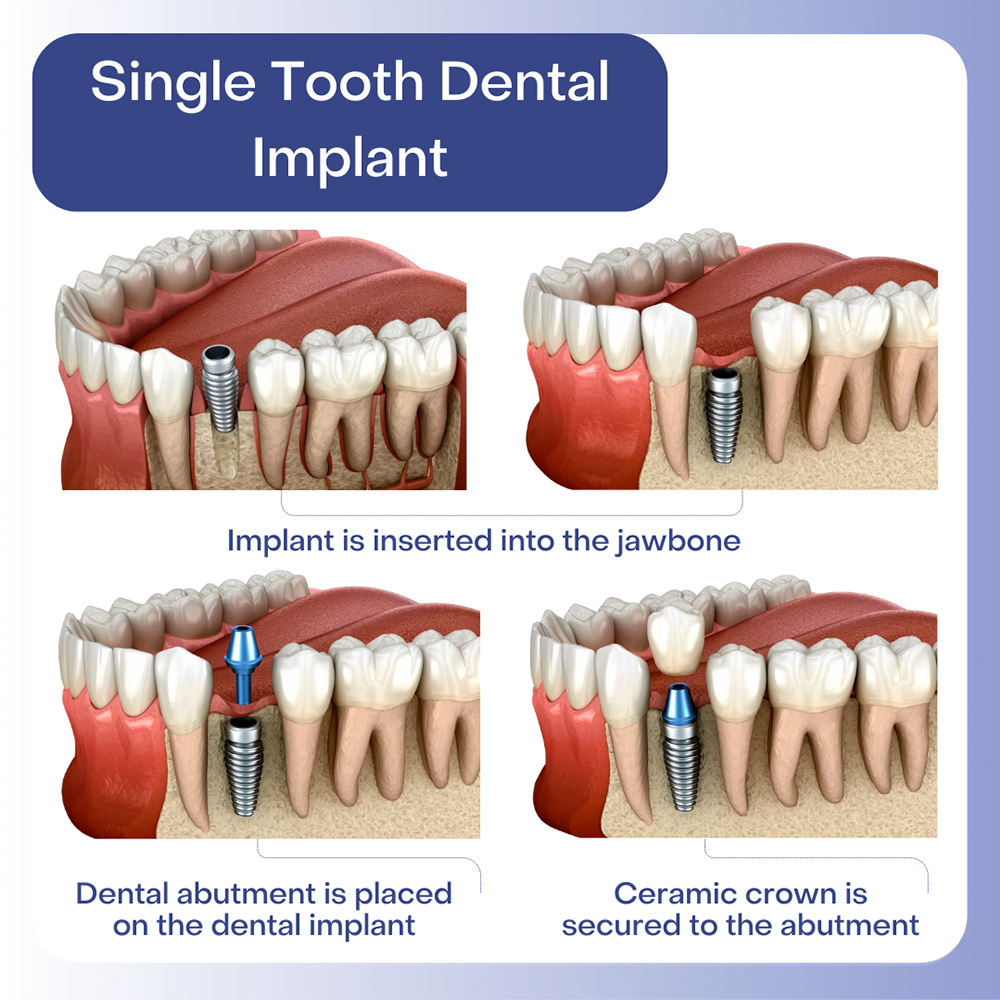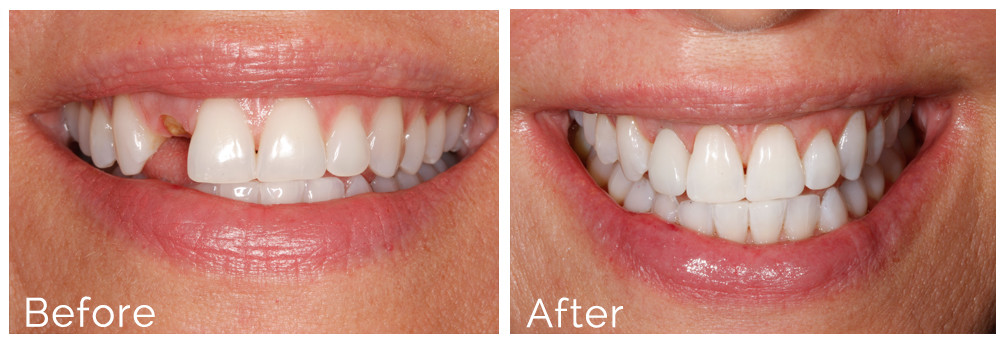An Unbiased View of Dental Sense
An Unbiased View of Dental Sense
Blog Article
9 Easy Facts About Dental Sense Shown
Table of ContentsWhat Does Dental Sense Do?All about Dental SenseDental Sense for BeginnersDental Sense for Beginners
are medical gadgets surgically implanted into the jaw to recover a person's capacity to eat or their appearance. They offer assistance for fabricated (fake) teeth, such as crowns, bridges, or dentures. When a tooth is lost as a result of injury or condition, a person can experience problems such as quick bone loss, faulty speech, or adjustments to chewing patterns that result in discomfort.Dental dental implant systems contain an oral implant body and oral implant joint and might also consist of an abutment fixation screw. Front tooth filling. The oral implant body is operatively placed in the jawbone instead of the tooth's root. The dental implant abutment is usually affixed to the dental implant body by the abutment addiction screw and expands via gums into the mouth to support the connected synthetic teeth
(https://www.find-us-here.com/businesses/Dental-Sense-Miami-Florida-USA/34200016/)Framework of The Dental Implant System selecting oral implants, speak to your oral company about the potential advantages and dangers, and whether you are a prospect for the procedure. Points to consider: Your overall health and wellness is an important factor in establishing whether you are a good prospect for dental implants, for how long it will certainly take to recover, and for how long the dental implant might remain in location.
Cigarette smoking may influence the healing process and reduce the long-term success of the implant. The recovery process for the implant body may take numerous months or longer, during which time you typically have a momentary abutment in location of the tooth. the oral implant procedure: Meticulously adhere to the oral health directions offered to you by your dental service provider.
Rumored Buzz on Dental Sense
Implant failing can result in the requirement for one more surgical procedure to deal with or replace the dental implant system. Restores the ability to eat Recovers cosmetic appearance Helps keep the jawbone from reducing as a result of bone loss Protects the health of the bordering bone and gum tissues Assists maintain adjacent (neighboring) teeth secure Enhances lifestyle Damage to surrounding all-natural teeth during implant positioning Injury to the surrounding cells during surgery, such as sinus opening Injury during surgical procedure (as an example, crack of surrounding jawbone) Inadequate feature, such as seeming like the teeth do not attack together usually A feeling that the tooth is loose or turning in position resulting from an abutment screw loosening up Implant body failing (looseness of the dental implant body) as a result of systemic infection, which may be extra most likely in clients with unchecked diabetes mellitus because of local infection in bone and periodontals supporting the implant body due to delayed recovery, which may be most likely in people that smoke Difficulty cleansing the periodontals around the implant, causing bad oral hygiene Untreated gum condition Post-surgical tingling as a result of nerve impingement or damage Constantly notify health and wellness care carriers and imaging technicians that you have oral implants before any magnetic resonance imaging (MRI) or x-ray treatments.
FDA is not knowledgeable about any type of unfavorable events reported for MRI or x-ray procedures with oral implants. Dental implants systems are usually constructed from products that adhere to worldwide agreement requirements of the International Organization for Standardization (ISO) or ASTM International. These standards have information of what makes a safe product.

A dental implant is a structure that replaces a missing tooth. With screw-like devices, the specialist inserts a dental implant right into the jawbone, and it serves as a support for an artificial tooth, called a crown. A tool called an abutment connects the synthetic tooth to the oral implant. The crown is personalized to fit the individual's mouth and match the shade of their teeth.
Our Dental Sense Diaries
Some people are not qualified for dental implant surgical treatment. It is for oral doctors to operate people with: acute illnessuncontrollable metabolic diseasebone or soft cells illness or infectionIf these concerns are dealt with, a person can have the surgical treatment. In, dental specialists avoid operating people with: If individuals with any one of the above undertake dental implant surgical procedure, there is a greater danger of the implant failing.

Dental dental implant surgery is a tailored process. Offer you time to heal. Affix the post and last crown, bridge visit or denture.
Next off, your cosmetic surgeon will thoroughly put the dental implant into your jaw. If your dental implant is near the front of your mouth, your dental professional will make a short-term tooth for you to use until you heal.
Dental Sense Things To Know Before You Buy
Your company can tell you what to anticipate in your situation. During the healing stage, your jawbone must fuse to the oral implant. This procedure, called osseointegration, is important for security and lasting success. This process can take anywhere from 3 to nine months. In some cases, it might take longer.
Once your dental implant heals, your dental professional can connect the abutment (small connector article) and your last repair (crown, bridge or denture). This usually takes regarding one hour to finish and might need a 2nd minor surgical treatment. You should not really feel any pain throughout your dental implant procedure because your provider will certainly use medication to numb your gums.
Report this page